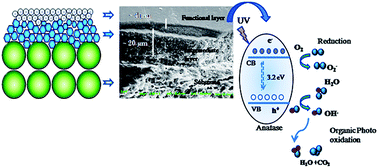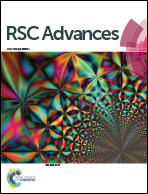A novel approach to formulate high flux multifunctional ultrafiltration membranes from photocatalytic titania composite precursors on multi-channel tubular substrates
Abstract
Anatase rich titanium dioxide ultrafiltration membranes with high filtration rates have been successfully developed on multi-channel tubular alumina substrates via aqueous sol–gel method from titania–alumina composite precursors containing 30 wt% alumina. The composite membrane material exhibited anatase phase stability above 800 °C and retained a BET surface area of 64 m2 g−1 even after calcination at 700 °C. Supported membranes on multi-channel substrates with an active layer thickness of 4 μm gave a water flux value of 215 L m−2 h−1 coupled with 80% rejection of Bovine Serum Albumin (BSA) with molecular weight 66 kD at 2 bar pressure. This is much higher compared to a flux of 27 L m−2 h−1 obtained for a single component titania membrane layer. The composite membrane materials showed excellent photocatalytic activity under UV irradiation such that a solution containing Methylene Blue (MB) dye showed 96% dye degradation within 2 h. Porous disc shaped substrates coated with the active titania composite layer showed methylene blue degradation of 44% under identical conditions. The present results point towards an excellent pathway for the development of multifunctional ultra-filtration membranes for water purification and also for other separation applications where separation together with photocatalysis will be of great importance.


 Please wait while we load your content...
Please wait while we load your content...